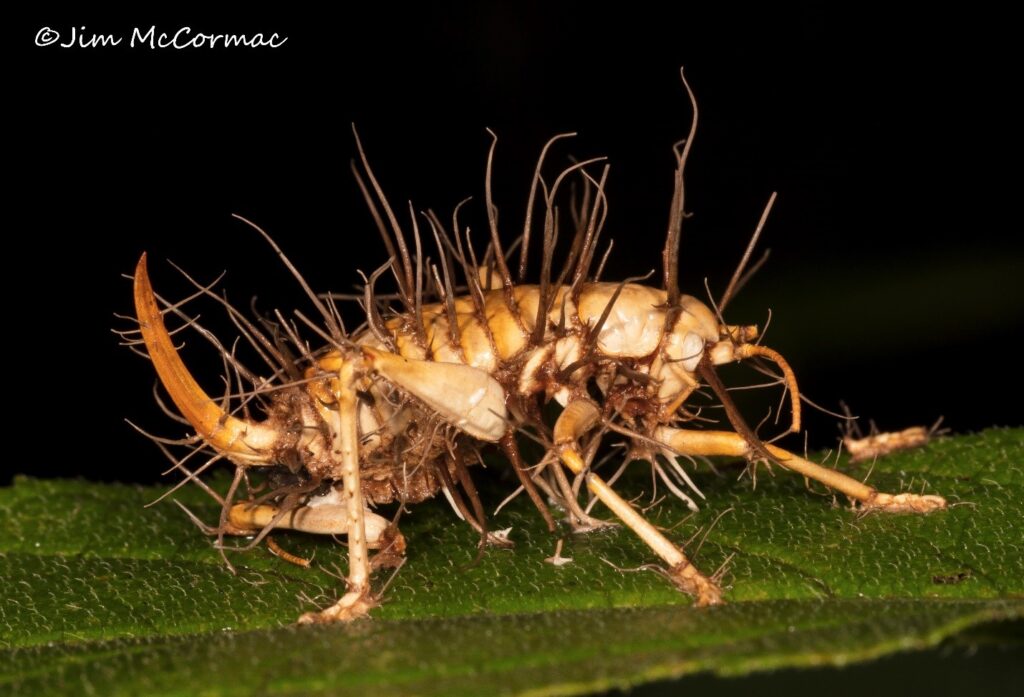
A female Carolina leafroller cricket, Camptonotus carolinensis, emerged from its lair and exploring leaves at night. I made this image last year in a southern Ohio forest. While these exceptionally long-antennae’d crickets are not rare, they are furtive and secretive. During the day, they hole up within rolled up leaves, hence the name. Come nightfall, they roam about on lower-lying foliage, and are quick to hop away with tremendous leaps if disturbed.


Here we have another female Carolina leafroller, but things have not gone swimmingly for the beast. Indeed, one of the worst possible fates imaginable has befallen the cute little cricket.
Laura Hughes, I believe, spotted the zombified orthopteran on a field trip to an Adams County, Ohio hotspot last Saturday. Never one to miss a chance to photo-document an attack of the zombie fungus, I took the opportunity to shoot some images of this fine example of a fate worse than death.

We look into the dead white eyes of the cricket, which bristles with emergent fungal hyphae. Cordyceps fungus, at least certain strains/species, attacks various small arthropods, eventually causing the demise of the host organism. I have seen it infecting other orthopterans, spiders, caterpillars, and other critters.
Apparently fungal spores land on and gain a beachhead on a suitable host, and then the fun begins. Fungal strands worm their way into the victim’s core, and rapidly grow throughout the body, consuming the soft parts. Cleverly keeping the host alive as long as possible – if a fungus can be considered clever – the fungal siege grows in intensity. In a last hurrah, the fungus somehow rewires the cricket’s brain to force it to act in an entirely unnatural way that is to the fungus’s benefit.
Chemical commands from the fungus direct the cricket to climb to a prominent exposed perch, and once it’s into a space exposed to breezes, the cricket – or whatever victim it may be – tightly seizes the substrate. In a horrifying grand finale, the fungal hyphae kills the cricket and caps its homicidal performance by shooting conspicuously elongate strands of hyphae from the host’s body. Spores are released from pores at the summits of these hyphae and waft off on the wind. Some of these will find their way to other hosts and begin the zombification process anew.
I suppose we humans should be glad this sort of fungal attack has not yet made its way to Homo sapiens.

As interesting as this is, I cant deny that all my mind keeps coming back to is 2 things. #1
The pain suffering confusion & ultimately the death of the cricket or any critter this fungus infects. #2 the fascinating fact that this fungi can or must be able to think to be able to control the victim for example making it go against all its instinct and climb against its will or instincts bc the fungi can communicate where to go what to do. Fascinating.
Oh my gosh ..thats wild! That how cordyceps is formed!
Thats exactly how they infect young naive minds with the fungus of liberalism at our Colleges and Universities.